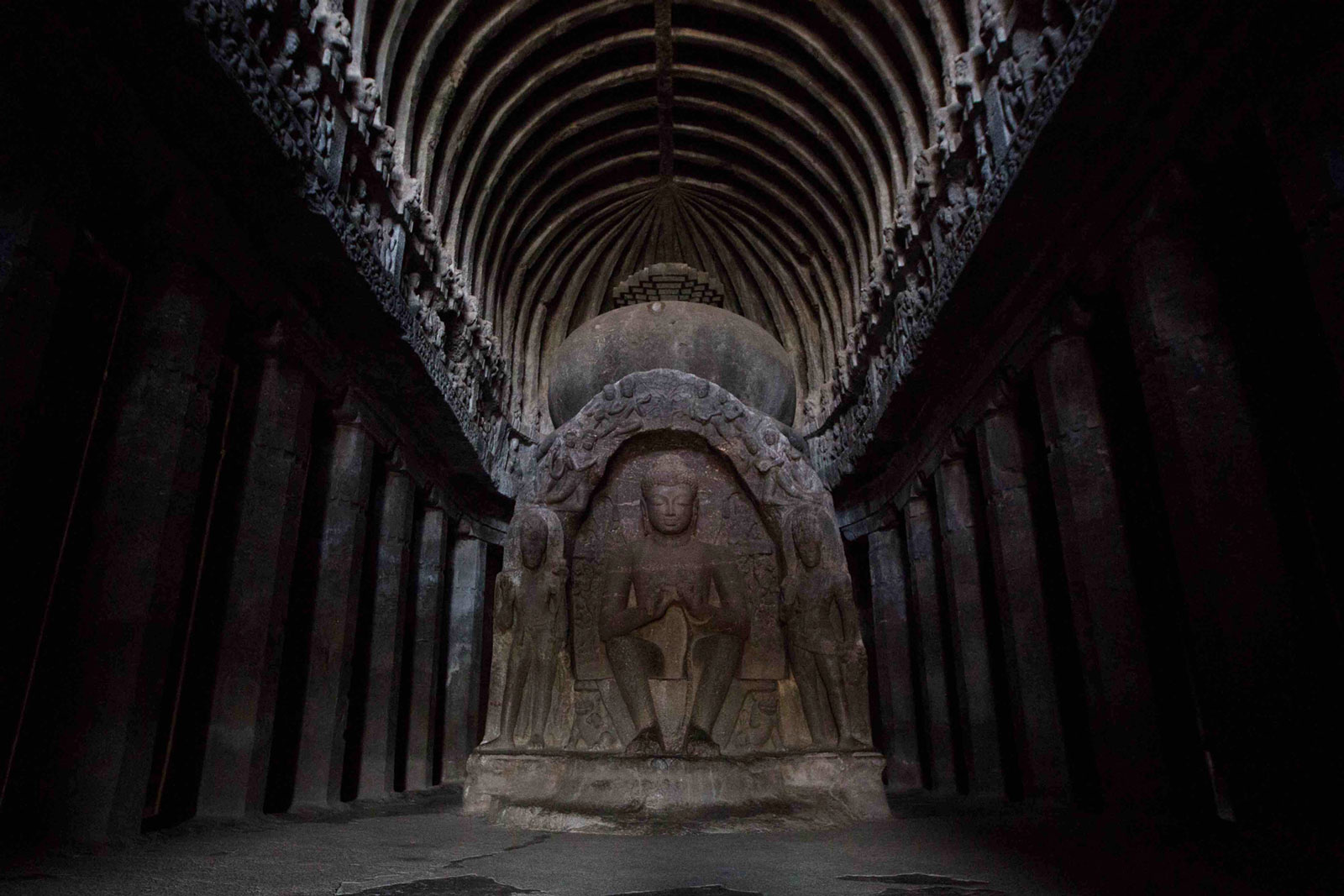The Buddha’s Original Teachings on Mindfulness
The Satipatthana Sutta, from the Pali Canon, outlines some of the Buddha’s first instructions in establishing mindful awareness. The post The Buddha’s Original Teachings on Mindfulness first appeared on Tricycle: The Buddhist Review. The post The Buddha’s Original Teachings...

Mindfulness means the ability to keep something in mind. On the Buddhist path, it functions in three ways: remembering to stay alert to what you’re doing in the present moment; remembering to recognize the skillful and unskillful qualities that arise in the mind; and remembering how to effectively abandon the qualities that get in the way of concentration, then developing the skillful ones that promote it.
The Satipatthana Sutta—The Establishing of Mindfulness Discourse—gives detailed instructions in the first two of these functions. It starts with the basic formula for establishing mindfulness, describing four frames of reference for anchoring mindfulness in the present moment. Then it asks and answers questions that focus solely on the beginning part of the formula: how to remain focused on each frame in and of itself.
To give you a sense of how the Buddha would recommend getting started in mindfulness for the sake of true happiness, here is the entire translated discourse.
Satipatthana Sutta (Majjhima Nikaya [MN] 10)
I have heard that on one occasion the Blessed One was staying in the Kuru country. Now there is a town of the Kurus called Kammasadhamma. There the Blessed One [the Buddha] addressed the monks, “Monks.”
“Lord,” the monks responded to him.
The Blessed One said: “This is the direct path for the purification of beings, for the overcoming of sorrow and lamentation, for the disappearance of pain and distress, for the attainment of the right method, and for the realization of unbinding—in other words, the four establishings of mindfulness. Which four?
[Unbinding: Pali nibbana (Skt. nirvana) is the goal of practice. In everyday Pali, nibbana referred to the extinguishing of a fire. In the physics of the Buddha’s time, this did not mean that the fire went out of existence. Instead, while the fire was burning, it was seen to be in a state of agitation because it clung to its fuel and, as a result, was trapped there. When it let go of its fuel, it was freed and reached a state of calm. The implication of the image is that you are trapped by your experiences because you hold onto them—they don’t hold onto you—and you can reach freedom by letting go.]
“There is the case where a monk remains focused on the body in and of itself—ardent, alert, and mindful—subduing greed and distress with reference to the world. He remains focused on feelings . . . mind . . . mental qualities in and of themselves—ardent, alert, and mindful—subduing greed and distress with reference to the world.
[“In and of itself” here means that you stay focused on the experience of the body, etc., on its own terms, without reference to how it might function in the external world or in the worlds of your imagination.
According to the Buddha, to be ardent means to wipe out unskillful thoughts as soon as they arise, giving rise to skillful ones in their place.]
BODY
“And how does a monk remain focused on the body in and of itself?
“There is the case where a monk—having gone to the wilderness, to the shade of a tree, or to an empty building—sits down folding his legs crosswise, holding his body erect and setting mindfulness to the fore. Always mindful, he breathes in; mindful he breathes out.
“Breathing in long, he discerns, ‘I am breathing in long’; or breathing out long, he discerns, ‘I am breathing out long.’ Or breathing in short, he discerns, ‘I am breathing in short’; or breathing out short, he discerns, ‘I am breathing out short.’ He trains himself, ‘I will breathe in sensitive to the entire body’; he trains himself, ‘I will breathe out sensitive to the entire body.’ He trains himself, ‘I will breathe in calming bodily fabrication’ [in other words, the in-and-out breath]; he trains himself, ‘I will breathe out calming bodily fabrication.’ Just as a dexterous turner or his apprentice, when making a long turn, discerns, ‘I am making a long turn,’ or when making a short turn discerns, ‘I am making a short turn’; in the same way the monk, when breathing in long, discerns, ‘I am breathing in long’; or breathing out long, he discerns, ‘I am breathing out long.’ . . . He trains himself, ‘I will breathe in calming bodily fabrication’; he trains himself, ‘I will breathe out calming bodily fabrication.’
“In this way he remains focused internally on the body in and of itself, or externally on the body in and of itself, or both internally and externally on the body in and of itself. Or he remains focused on the phenomenon of origination [Pali samudaya, referring not to the simple arising of something, but to the processes that cause it to arise] with regard to the body, on the phenomenon of passing away with regard to the body, or on the phenomenon of origination and passing away with regard to the body. Or his mindfulness that ‘There is a body’ is maintained to the extent of knowledge and remembrance. And he remains independent, unsustained by [not clinging to] anything in the world. This is how a monk remains focused on the body in and of itself.
“And further, when walking, the monk discerns, ‘I am walking.’ When standing, he discerns, ‘I am standing.’ When sitting, he discerns, ‘I am sitting.’ When lying down, he discerns, ‘I am lying down.’ Or however his body is disposed, that is how he discerns it.
“In this way he remains focused internally on the body in and of itself . . . This is how a monk remains focused on the body in and of itself.
“And further, when going forward and returning, he makes himself fully alert; when looking toward and looking away . . . when flexing and extending his limbs… when carrying his outer cloak, his upper robe, and his bowl . . . when eating, drinking, chewing, and savoring . . . when urinating and defecating . . . when walking, standing, sitting, falling asleep, waking up, talking, and remaining silent, he makes himself fully alert.
“In this way he remains focused internally on the body in and of itself . . . This is how a monk remains focused on the body in and of itself.
“And further . . . just as if a sack with openings at both ends were full of various kinds of grain—wheat, rice, mung beans, kidney beans, sesame seeds, husked rice—and a man with good eyesight, pouring it out, were to reflect, ‘This is wheat. This is rice. These are mung beans. These are kidney beans. These are sesame seeds. This is husked rice,’ in the same way, the monk reflects on this very body from the soles of the feet on up, from the crown of the head on down, surrounded by skin and full of various kinds of unclean things: ‘In this body there are head hairs, body hairs, nails, teeth, skin, flesh, tendons, bones, bone marrow, kidneys, heart, liver, pleura, spleen, lungs, large intestines, small intestines, gorge, feces, bile, phlegm, pus, blood, sweat, fat, tears, skin-oil, saliva, mucus, fluid in the joints, urine.’
“In this way he remains focused internally on the body in and of itself . . . This is how a monk remains focused on the body in and of itself.
“And further . . . just as a dexterous butcher or his apprentice, having killed a cow, would sit at a crossroads cutting it up into pieces, the monk reflects on this very body—however it stands, however it is disposed—in terms of properties: ‘In this body there is the earth property, the liquid property, the fire property, and the wind property.’
“In this way he remains focused internally on the body in and of itself . . . This is how a monk remains focused on the body in and of itself.
“And further, as if he were to see a corpse cast away in a charnel ground—one day, two days, three days dead—bloated, livid, and festering, he applies it to this very body, ‘This body, too: Such is its nature, such is its future, such its unavoidable fate.’
“In this way he remains focused internally on the body in and of itself . . . This is how a monk remains focused on the body in and of itself.
“Or again, as if he were to see a corpse cast away in a charnel ground, being chewed by crows, being chewed by vultures, being chewed by hawks, being chewed by dogs, being chewed by hyenas, being chewed by various other creatures . . . a skeleton smeared with flesh and blood, connected with tendons . . . a fleshless skeleton smeared with blood, connected with tendons . . . a skeleton without flesh or blood, connected with tendons . . . bones detached from their tendons, scattered in all directions—here a hand bone, there a foot bone, here a shin bone, there a thigh bone, here a hip bone, there a back bone, here a rib, there a chest bone, here a shoulder bone, there a neck bone, here a jaw bone, there a tooth, here a skull . . . the bones whitened, somewhat like the color of shells . . . the bones piled up, more than a year old . . . the bones decomposed into a powder: He applies it to this very body, ‘This body, too: Such is its nature, such is its future, such its unavoidable fate.’
“In this way he remains focused internally on the body in and of itself, or externally on the body in and of itself, or both internally and externally on the body in and of itself. Or he remains focused on the phenomenon of origination with regard to the body, on the phenomenon of passing away with regard to the body, or on the phenomenon of origination and passing away with regard to the body. Or his mindfulness that ‘There is a body’ is maintained to the extent of knowledge and remembrance. And he remains independent, unsustained by [not clinging to] anything in the world. This is how a monk remains focused on the body in and of itself.
FEELINGS
“And how does a monk remain focused on feelings in and of themselves? There is the case where a monk, when feeling a painful feeling, discerns, ‘I am feeling a painful feeling.’ When feeling a pleasant feeling, he discerns, ‘I am feeling a pleasant feeling.’ When feeling a neither-painful-nor-pleasant feeling, he discerns, ‘I am feeling a neither-painful-nor-pleasant feeling.’
“When feeling a painful feeling of the flesh, he discerns, ‘I am feeling a painful feeling of the flesh.’ When feeling a painful feeling not of the flesh, he discerns, ‘I am feeling a painful feeling not of the flesh.’ When feeling a pleasant feeling of the flesh, he discerns, ‘I am feeling a pleasant feeling of the flesh.’ When feeling a pleasant feeling not of the flesh, he discerns, ‘I am feeling a pleasant feeling not of the flesh.’ When feeling a neither-painful-nor-pleasant feeling of the flesh, he discerns, ‘I am feeling a neither-painful-nor-pleasant feeling of the flesh.’ When feeling a neither-painful-nor-pleasant feeling not of the flesh, he discerns, ‘I am feeling a neither-painful-nor-pleasant feeling not of the flesh.’
[Feelings of the flesh are the simple pains, pleasures, etc., that arise willy-nilly at the senses including the mind as the sixth sense. Feelings not of the flesh are those that you deliberately bring into being with regard to the practice. A pain not of the flesh would be the pain that comes from the thought that you still have further to go in practice and have not yet reached your goal. A pleasure not of the flesh would be the pleasure that comes from getting the mind into a solid state of concentration, called jhana. The Buddha recommends developing both these sorts of feelings—the pain, as a way of motivating yourself to practice more seriously; the pleasure, as a way of giving the mind nourishment and shelter along the path.]
“In this way he remains focused internally on feelings in and of themselves, or externally on feelings in and of themselves, or both internally and externally on feelings in and of themselves. Or he remains focused on the phenomenon of origination with regard to feelings, on the phenomenon of passing away with regard to feelings, or on the phenomenon of origination and passing away with regard to feelings. Or his mindfulness that ‘There are feelings’ is maintained to the extent of knowledge and remembrance. And he remains independent, unsustained by [not clinging to] anything in the world. This is how a monk remains focused on feelings in and of themselves.
MIND
“And how does a monk remain focused on the mind in and of itself? There is the case where a monk, when the mind has passion, discerns, ‘The mind has passion.’ When the mind is without passion, he discerns, ‘The mind is without passion.’ When the mind has aversion, he discerns, ‘The mind has aversion.’ When the mind is without aversion, he discerns, ‘The mind is without aversion.’ When the mind has delusion, he discerns, ‘The mind has delusion.’ When the mind is without delusion, he discerns, ‘The mind is without delusion.’
“When the mind is constricted, he discerns, ‘The mind is constricted [sluggish].’ When the mind is scattered, he discerns, ‘The mind is scattered.’ When the mind is enlarged, he discerns, ‘The mind is enlarged. When the mind is not enlarged, he discerns that the mind is not enlarged. When the mind is surpassed, he discerns, ‘The mind is surpassed.’ When the mind is unsurpassed, he discerns, ‘The mind is unsurpassed.’ When the mind is concentrated, he discerns, ‘The mind is concentrated.’ When the mind is not concentrated, he discerns, ‘The mind is not concentrated.’ When the mind is released, he discerns, ‘The mind is released.’ When the mind is not released, he discerns, ‘The mind is not released.’
“In this way he remains focused internally on the mind in and of itself, or externally on the mind in and of itself, or both internally and externally on the mind in and of itself. Or he remains focused on the phenomenon of origination with regard to the mind, on the phenomenon of passing away with regard to the mind, or on the phenomenon of origination and passing away with regard to the mind. Or his mindfulness that ‘There is a mind’ is maintained to the extent of knowledge and remembrance. And he remains independent, unsustained by [not clinging to] anything in the world. This is how a monk remains focused on the mind in and of itself.
MENTAL QUALITIES
“And how does a monk remain focused on mental qualities in and of themselves?
“There is the case where a monk remains focused on mental qualities in and of themselves with reference to the five hindrances. And how does a monk remain focused on mental qualities in and of themselves with reference to the five hindrances? There is the case where, there being sensual desire present within, a monk discerns, ‘There is sensual desire present within me.’ Or, there being no sensual desire present within, he discerns, ‘There is no sensual desire present within me.’ He discerns how there is the arising of unarisen sensual desire. And he discerns how there is the abandoning of sensual desire once it has arisen. And he discerns how there is no further appearance in the future of sensual desire that has been abandoned. [The same formula is repeated for the remaining hindrances: ill will, sloth and drowsiness, restlessness and anxiety, and uncertainty.]
“In this way he remains focused internally on mental qualities in and of themselves . . . This is how a monk remains focused on mental qualities in and of themselves with reference to the five hindrances.
“And further, the monk remains focused on mental qualities in and of themselves with reference to the five clinging-aggregates. And how does a monk remain focused on mental qualities in and of themselves with reference to the five clinging-aggregates? There is the case where a monk [discerns]: ‘Such is form, such its origination, such its disappearance. Such is feeling . . . Such is perception . . . Such are fabrications . . . Such is consciousness, such its origination, such its disappearance.’
“In this way he remains focused internally on mental qualities in and of themselves . . . This is how a monk remains focused on mental qualities in and of themselves with reference to the five clinging-aggregates.
“And further, the monk remains focused on mental qualities in and of themselves with reference to the sixfold internal and external sense media. And how does a monk remain focused on mental qualities in and of themselves with reference to the sixfold internal and external sense media? There is the case where he discerns the eye, he discerns forms, he discerns the fetter that arises dependent on both. He discerns how there is the arising of an unarisen fetter. And he discerns how there is the abandoning of a fetter once it has arisen. And he discerns how there is no further appearance in the future of a fetter that has been abandoned. [The same formula is repeated for the remaining sense media: ear, nose, tongue, body, and intellect.]
“In this way he remains focused internally on mental qualities in and of themselves . . . This is how a monk remains focused on mental qualities in and of themselves with reference to the sixfold internal and external sense media.
“And further, the monk remains focused on mental qualities in and of themselves with reference to the seven factors for awakening. And how does a monk remain focused on mental qualities in and of themselves with reference to the seven factors for awakening? There is the case where, there being mindfulness as a factor for awakening present within, he discerns, ‘Mindfulness as a factor for awakening is present within me.’ Or, there being no mindfulness as a factor for awakening present within, he discerns, ‘Mindfulness as a factor for awakening is not present within me.’ He discerns how there is the arising of unarisen mindfulness as a factor for awakening. And he discerns how there is the culmination of the development of mindfulness as a factor for awakening once it has arisen. [The same formula is repeated for the remaining factors for awakening: analysis of qualities, persistence, rapture, calm, concentration, and equanimity.]
“In this way he remains focused internally on mental qualities in and of themselves . . . This is how a monk remains focused on mental qualities in and of themselves with reference to the seven factors for awakening.
“And further, the monk remains focused on mental qualities in and of themselves with reference to the four noble truths. And how does a monk remain focused on mental qualities in and of themselves with reference to the four noble truths? There is the case where he discerns, as it has come to be, that ‘This is stress . . .This is the origination of stress . . . This is the cessation of stress . . . This is the way leading to the cessation of stress.’
“In this way he remains focused internally on mental qualities in and of themselves, or externally on mental qualities in and of themselves, or both internally and externally on mental qualities in and of themselves. Or he remains focused on the phenomenon of origination with regard to mental qualities, on the phenomenon of passing away with regard to mental qualities, or on the phenomenon of origination and passing away with regard to mental qualities. Or his mindfulness that ‘There are mental qualities’ is maintained to the extent of knowledge and remembrance. And he remains independent, unsustained by [not clinging to] anything in the world. This is how a monk remains focused on mental qualities in and of themselves with reference to the four noble truths.
CONCLUSION
“Now, if anyone would develop these four establishings of mindfulness in this way for seven years, one of two fruits can be expected for him: either gnosis [full awakening] right here and now, or—if there be any remnant of clinging-sustenance—non-return. [There are four levels of awakening. Non-return—in which you are not destined to be born again in the human world, and will reach unbinding in one of the higher heavens—is the third of the four.]
“Let alone seven years. If anyone would develop these four establishings of mindfulness in this way for six years . . . five . . . four . . . three . . . two years . . . one year . . . seven months . . . six months . . . five . . . four . . . three . . . two months . . . one month . . . half a month, one of two fruits can be expected for him: either gnosis right here and now, or—if there be any remnant of clinging-sustenance—non-return.
“Let alone half a month. If anyone would develop these four establishings of mindfulness in this way for seven days, one of two fruits can be expected for him: either gnosis right here and now, or—if there be any remnant of clinging-sustenance—non-return.
“‘This is the direct path for the purification of beings, for the overcoming of sorrow and lamentation, for the disappearance of pain and distress, for the attainment of the right method, and for the realization of unbinding—in other words, the four establishings of mindfulness.’ Thus was it said, and in reference to this was it said.”
That is what the Blessed One said. Gratified, the monks delighted in the Blessed One’s words.
⧫
For more on mindfulness practice, see suttas MN 2, MN 101, MN 118; Samyutta Nikaya [SN] 16:2; or Anguttara Nikaya [AN] 4:245, and AN 8:70—all available at dhammatalks.org. Thanissaro Bhikkhu has also written two books on the topic: The Karma of Mindfulness and Right Mindfulness.
This article was originally published on March 5, 2018.

 Troov
Troov 
































